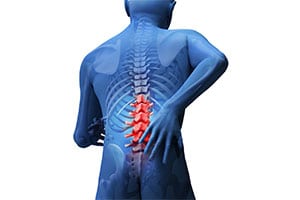Chronic Back & Neck Pain Treatments
 Back and neck pain is something more than 80 percent of the population experiences at one time or another, usually on a temporary basis. If back or neck pain lasts for 3-4 months or more, it's considered chronic and may become more distracting. While home remedies such as the use of heat or ice applications, over-the-counter medications, and some initial rest may be beneficial, such treatments aren't always effective. If this is where you're at with your back and neck pain, there are other possible treatments available to consider.
Back and neck pain is something more than 80 percent of the population experiences at one time or another, usually on a temporary basis. If back or neck pain lasts for 3-4 months or more, it's considered chronic and may become more distracting. While home remedies such as the use of heat or ice applications, over-the-counter medications, and some initial rest may be beneficial, such treatments aren't always effective. If this is where you're at with your back and neck pain, there are other possible treatments available to consider.
Dr. Moheimani works with patients to determine the cause of back or neck pain, and then find conservative treatments that will be most effective. If surgery is needed, it will be provided expertly and with comprehensive rehabilitation and care.
Here are some of the more common culprits of back or neck pain:
- Spinal deformities
- Degenerative disc disease
- Herniated discs
- Spinal stenosis
- Failed back surgery syndrome
- Bone cancer and related tumors
- Osteoarthritis
- Spondylolisthesis
- Spinal fractures
Physical Therapy
A frequent go-to remedy for back and neck pain, physical therapy (PT) can include a variety of treatments, therapeutic techniques, and exercises. PT can be either passive (done to the patient) or active (the patient participates). Most sessions will be a combination of techniques based on an assessment of your condition and your specific treatment goals. Physical therapy specific to back and neck pain may involve:
- Range-of-motion exercises
- Core strengthening exercises
- Massage therapy
- Gentle back or neck stretches
- Hot and cold therapy
- TENS (transcutaneous electrical nerve stimulation) units
- Ultrasound
Chiropractic Care
Chiropractic care involves hands-on manipulation of soft tissues around the all parts of the spine, including the lower back, thoracic (middle spine), and the seven bones of the cervical spine (neck). Chiropractic treatment may help with both chronic and acute (sudden) spine pain. The stimulation often restores the spine's natural alignment and increases blood flow.
 Better circulation within tissues encourages natural healing that may relieve or lessen back and neck pain. Strategic manipulations often restore mobility and flexibility to joints and muscles affected by repetitive stress or some type of injury. Chiropractic care for back and neck pain typically includes:
Better circulation within tissues encourages natural healing that may relieve or lessen back and neck pain. Strategic manipulations often restore mobility and flexibility to joints and muscles affected by repetitive stress or some type of injury. Chiropractic care for back and neck pain typically includes:
- Lab and diagnostic testing to determine if chiropractic treatment will be effective
- The use of controlled force to improve range-of-motion
- Manipulation of joints in a way that may take pressure off nerve roots to decrease discomfort
Acupuncture Treatments
There's research suggesting acupuncture may be more effective for chronic neck pain than traditional massage therapy. Involving the careful use of sterilized needles inserted into carefully targeted areas of the body, acupuncture may be equally effective for the short-term relief from chronic back pain. Certain points are manipulated in a way that stimulates the central nervous system to create a better sense of well-being.
It's believed that this stimulation may encourage the release of chemicals that can naturally affect tissues in the back and neck and nerves carrying signals to the pain-controlling part of the brain. Based on traditional Chinese medicine, the treatment may help manage back and neck pain by:
- Creating a positive flow of energy (Qi)
- Triggering the release of natural opioids in the brain that may ease pain sensations
- Increasing the production of endorphins, the body's natural pain-relieving hormones
Surgery
Surgery for chronic back and neck pain is rarely the first attempt at relief. Most of the time, conservative (non-surgical) treatments will provide complete relief or ease discomfort enough to make it manageable. When pain management options aren't effective or pain is severe and debilitating, surgery may be worth considering. Many of the procedures performed today, including fusion and decompression surgeries, involve minimally invasive techniques that often result in fewer complications and faster recoveries.

